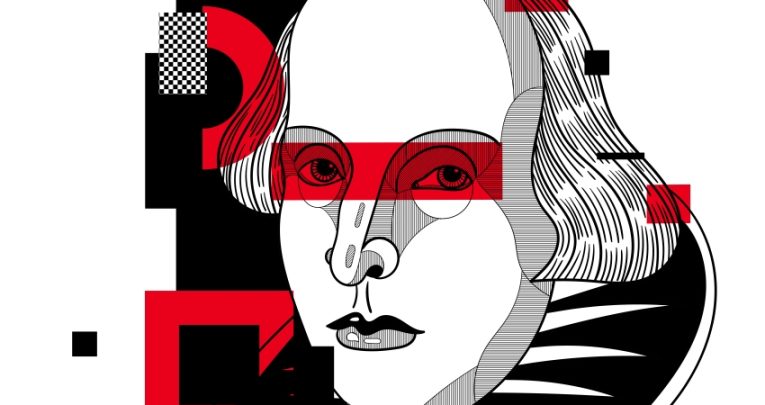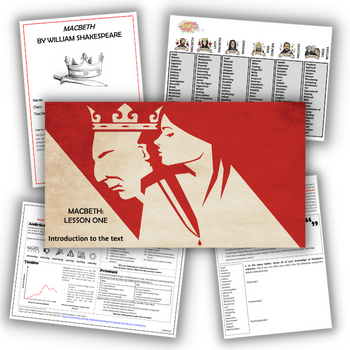Shakespearean characters – What they tell us about their time (and ours)

Zoe Enser looks at several recurring archetypes in Shakespeare’s works, and what they say about the Bard’s contemporary surroundings and artistic intent…

- by Zoe Enser

The more you learn about Shakespearean characters and the plays they’re from, the more you become aware of certain recurring ideas.
The king, the daughter, the wife, the soldier and the fool all appear across the body of his work. These will have had a certain resonance with his audience.
Shakespearean Kings
The patriarchal figure is a powerful one, dominating many of Shakespeare’s stories. From dead fathers in Hamlet, Twelfth Night and Much Ado About Nothing, to elderly and misguided ones in King Lear and The Tempest, they often dominate the tales.
Kings, of course, provide a key focus for the history plays. They often cross over in the role of the father too.
Lady Macbeth, on preparing to kill King Duncan, claims she would have killed the old man himself ‘had he not resembled my father’ (Macbeth, II, I, 14–15).
Duncan in Macbeth
The kingship of Duncan, and indeed the concept of kingship more widely, is an interesting area to explore in Macbeth.
Duncan is associated with an aged wisdom. He is kind, innocent and firmly linked to an understanding of divine right and The Great Chain of Being.
This is an idea the then-monarch, James, had been keen to promote in his ‘Divinity of Kings’ tome.
However, like Lear, Duncan also displays a naivety and lack of foresight that ultimately leads to his demise.
“The concept of kingship […] is an interesting area to explore in Macbeth“
Just as Lear is unable to see the danger before him in the form of his daughters – greedy for power and cruel in their methods – Duncan is unable to see his own downfall in the guise of Macbeth.
He trusts too quickly and fails to guard against the threats that surround him. He has already experienced the treachery of Cawdor. Yet he continues to expose himself to peril, seemingly having learned nothing from these past experiences.
Henry
Other kings and leaders in the histories perhaps present a more positive view of leadership. Henry’s ascent to the throne sees him throwing off childish things, in the form of Falstaff. He adopts a more humble and inclusive leadership, saying:
“I am not covetous for gold,
Nor care I who doth feed upon my cost;
It yearns me not if men my garments wear;
Such outward things dwell not in my desires”
(Hen. V, IV, iii, 24–27)
Shakespearean fathers and blockers
Shakespearean father figure characters are often leaders in society. They typically perform the function of the ‘blocker’ – a familiar role in traditional narratives.
They are there to be overcome; a barrier to true happiness. A Midsummer Night’s Dream, The Taming of the Shrew, A Winter’s Tale, The Tempest and Romeo and Juliet all include fathers who are, depending on your viewpoint, protecting their daughters from the dangers of the world outside, but equally preventing their pursuit of true happiness.
“They typically perform the function of the ‘blocker’”
They are figures of authority, often representing society – much as with family as a whole. They are often controlling and manipulative.
These Shakespearean characters isolate their daughters from the rest of the world. They would frequently rather see the death of their daughters rather than hear of their dishonour or disobedience.
Hero in Much Ado About Nothing, Juliet in Romeo and Juliet and Cordelia in King Lear are all constrained by the whims of their fathers. This is indicative of ideas around property and gender.
Exploring the parent-child relationship with students can be a particularly useful way to begin examining the plays. It’s something which, even with the best relationships, students can very much identify with.
Shakespearean mothers, queens and hags
Mothers are notoriously absent in many of Shakespeare’s plays. Lear’s daughters – Ophelia, Desdemona and Hero – are all notably motherless.
In Romeo and Juliet, the deficit of Juliet’s mother (seemingly distant from her daughter and unsympathetic to her pleas not to marry) is emphasised by her relationship with the Nurse. This is filled with a closeness and care absent in the actual mother-daughter relationship.
“Exploring the parent-child relationship with students can be a particularly useful way to […] examin[e] the plays”
Those who are there – older women and those with questionable maternal instincts – don’t fare much better.
Volumnia and Lady Macbeth
In Coriolanus, Volumnia seeks to maintain her own power within Rome through her political ambitions for her son.
She is proud of his status as a heroic soldier, referring to his wounds as if medals of honour and persuading him to play out her own ambitions:
Let thy mother rather feel thy pride than fear
Thy dangerous stoutness, for I mock at death
With as big heart as thou.
Do as thou list,
Thou valiantness was mine, thou suck’dst it from me
(Coriolanus, III, ii, 125–129)
Volumnia’s techniques to persuade her son to her ends echo the words of Lady Macbeth, who ‘Shame[s] to wear a heart so white.’
Both women seek greater powers for their ‘partner in greatness’. Ultimately, they realise they are unable to control what it is they unleash.
Macbeth no longer needs his wife’s counsel as his tyranny takes hold, leaving her wracked with guilt and her implied suicide.
Wicked queens
The ‘fiend-like queen’ we see in this play recurs in Shakespearean mother characters, much like the wicked queens of fairy tales.
In Hamlet, Gertrude is prepared to maintain her place on the throne by marrying her dead husband’s brother. The question as to how much she was complicit in the murder is one which Hamlet and the audience must continue to puzzle.
The use of older, female Shakespearean characters to represent evil deeds and desires is perhaps indicative of societal attitudes towards older women during this period.
No longer capable of childbearing, these women are either deleted from the plays, no longer serving the required function, or cast as villains. They’re full of unnatural desires, hungry for power and prepared to go to any lengths to achieve this.
Shakespearean soldier characters
Returning soldiers are a recurrent concept in Shakespeare’s plays, from Much Ado About Nothing to Othello.
Coriolanus is perhaps the most extreme example. He no longer regards himself as a man, frequently referring to himself as a ‘thing’ throughout the play and more a weapon of war or machine than a man. He is scarred and moulded by his experiences on the battlefield.
As he attempts to become ‘author of himself’ – rewriting his position within his new world and, attempting, and failing, to resist the ambitions of his mother – he is renamed and redefined. However, ultimately he loses himself in this new world he needs to navigate.
Equally, Macbeth’s tactics on the battlefield do not translate well into his position as king. Tyranny and bloodshed become the signature of all he does once he is no longer a soldier.
Shakespearean fool
Fools often do not play by the same rules as their masters or other characters around them. They are often outside of some of the usual bounds of social order. For example, Feste moves between the houses of the two different households in Twelfth Night with apparent ease.
A Shakespearean fool character brings elements of the carnivalesque to the plays. They often caper and contort alongside their songs and witticisms, provoking some much-needed comic relief.
They also seem to have a freedom to speak in ways which would not be accepted from Shakespearean characters of a different position.
For example, the truth that the Fool in King Lear offers to the King is at times sharp and brutal. It offers Lear his ‘coxcomb’ in exchange for the crown, calling him out for the fool he is.
The fool often speaks more truth than those Shakespearean characters around him. This is either wrapped up in riddles and songs (as with Feste and double plays), or in the words of the Porter in Macbeth, ‘dark in their presence.’
The idea of the ‘fool that sees’ predates Shakespeare, as does the supposed wise man who is blind.
“They also seem to have a freedom to speak in ways which would not be accepted from Shakespearean characters”
In King Lear, neither the King nor the supposedly wise Gloucester can see the truth. It is only when they are blinded, either by their madness or the vicious attack from Lear’s daughter, Goneril, that they can begin to see the truth of the world around them.
Zoe Enser is a former classroom teacher and head of English. This article is based on an edited extract from her book, Bringing Forth the Bard: A Guide to Teaching Shakespeare in the English Classroom (Crown House). Browse our Shakespeare Week resources.










